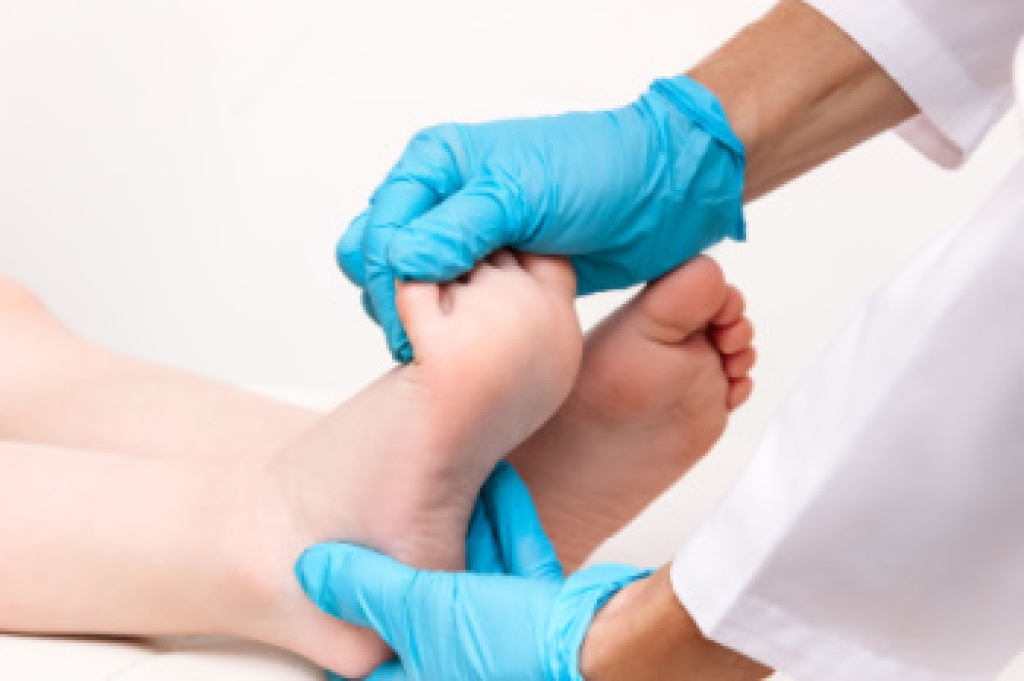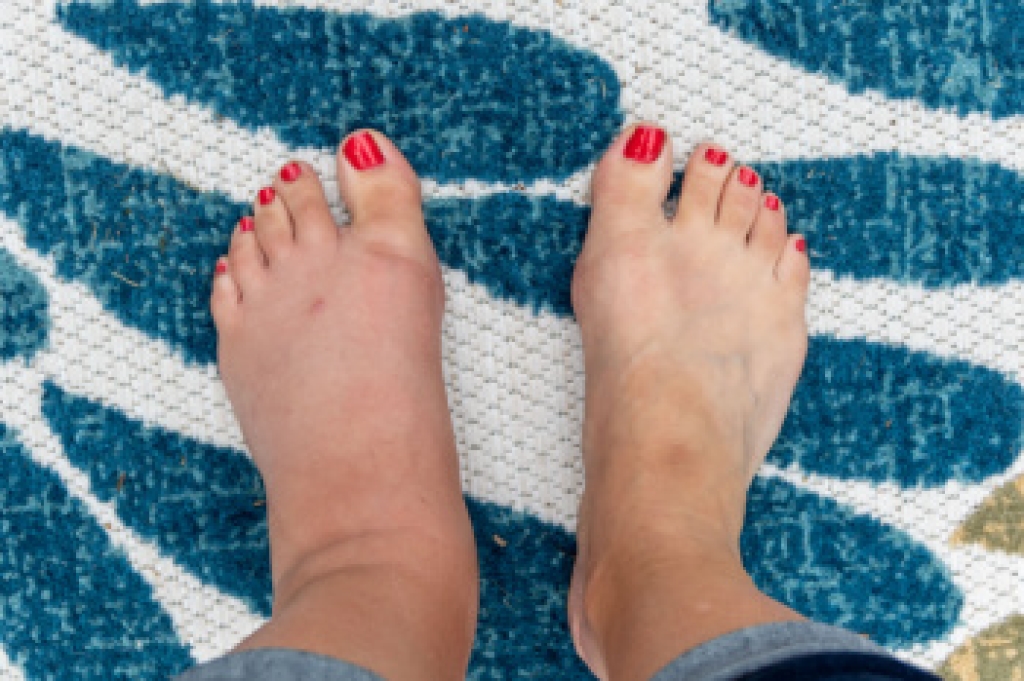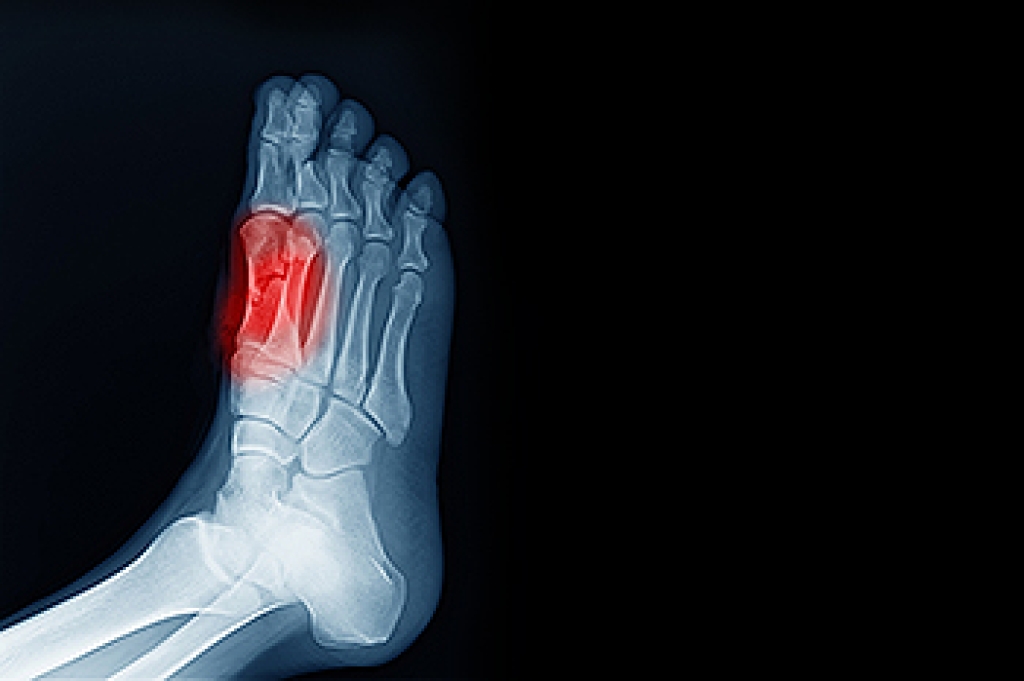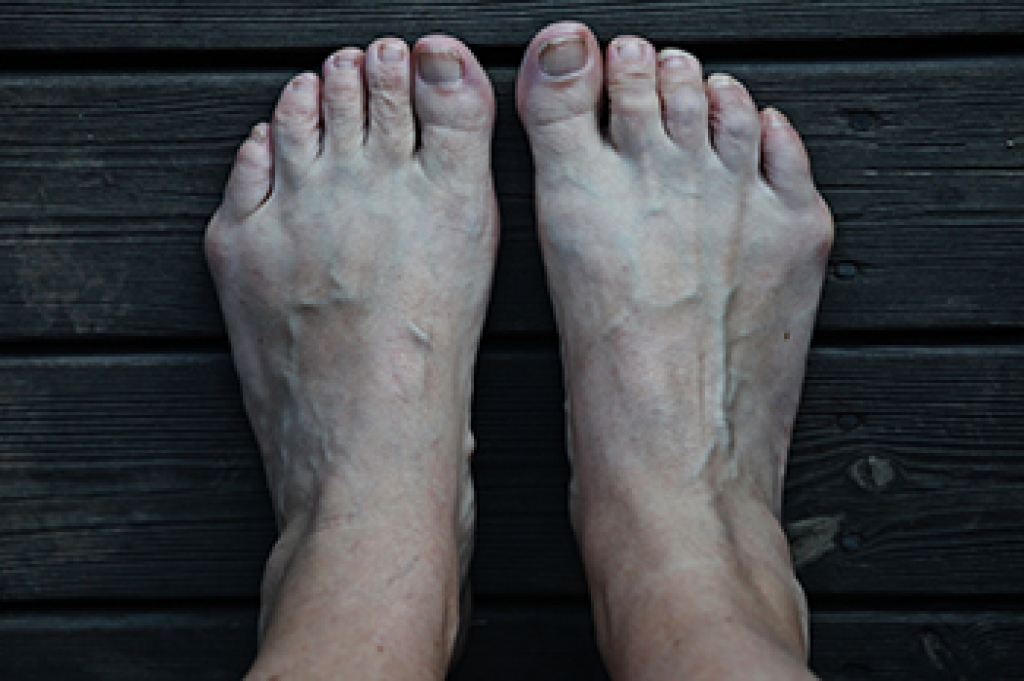Connect With Us
Blog
Blog
Growing Pains and Other Causes of Pediatric Heel Pain

Heel pain in children is often linked to Sever’s disease, a growth plate inflammation that appears during growth spurts, especially in active kids. But it is not the only reason young heels may hurt. Overuse injuries from sports, wearing poorly fitting shoes, flat feet, or high arches can also strain the heel. Plantar fasciitis, although more common in adults, can occur in athletic children. Bruises from impact, minor fractures, or tendonitis may cause similar discomfort. Even certain infections or inflammatory conditions can lead to heel pain. Symptoms can include limping, swelling, or pain that worsens after activity. Early evaluation helps identify the true cause and guide treatment, which may involve rest, stretching, wearing better footwear, or orthotics. If your child has ongoing heel pain, it is suggested that you see a podiatrist for an accurate diagnosis and appropriate treatment.
Many people suffer from bouts of heel pain. For more information, contact Daniel Bell, DPM of Florida. Our doctor can provide the care you need to keep you pain-free and on your feet.
Causes of Heel Pain
Heel pain is often associated with plantar fasciitis. The plantar fascia is a band of tissues that extends along the bottom of the foot. A rip or tear in this ligament can cause inflammation of the tissue.
Achilles tendonitis is another cause of heel pain. Inflammation of the Achilles tendon will cause pain from fractures and muscle tearing. Lack of flexibility is also another symptom.
Heel spurs are another cause of pain. When the tissues of the plantar fascia undergo a great deal of stress, it can lead to ligament separation from the heel bone, causing heel spurs.
Why Might Heel Pain Occur?
- Wearing ill-fitting shoes
- Wearing non-supportive shoes
- Weight change
- Excessive running
Treatments
Heel pain should be treated as soon as possible for immediate results. Keeping your feet in a stress-free environment will help. If you suffer from Achilles tendonitis or plantar fasciitis, applying ice will reduce the swelling. Stretching before an exercise like running will help the muscles. Using all these tips will help make heel pain a condition of the past.
If you have any questions, please feel free to contact our office located in Pembroke Pines and Plantation, FL . We offer the newest diagnostic and treatment technologies for all your foot care needs.
Causes of Swollen Feet and Ankles

Swollen feet and ankles can result from prolonged standing, inflammation, pregnancy, or underlying health conditions. Common medical causes include issues with the liver, kidneys, or heart, which can lead to fluid retention and discomfort. Inflammation from injuries or chronic conditions such as arthritis may also contribute to swelling. During pregnancy, the body naturally holds more fluid, leading to puffiness in the lower limbs. A podiatrist can assess your symptoms, identify the cause, and recommend treatments to reduce swelling and improve circulation. Whether it is a minor concern or a sign of a more serious issue, timely care is important. If you have swollen feet or ankles, it is suggested that you visit a podiatrist who can offer effective relief tips.
Swollen feet can be a sign of an underlying condition. If you have any concerns, contact Daniel Bell, DPM of Florida. Our doctor can provide the care you need to keep you pain-free and on your feet.
Swollen feet are a common ailment among pregnant women and people who stand or sit for extended periods. Aging may increase the possibility of swollen feet and patients who are obese often notice when their feet are swelling too. There may be medical reasons why swollen feet occur:
- Phlebitis - A condition that causes the veins to become inflamed and can also cause leg pain.
- Liver disease - This may lead to low blood levels of albumin which is a protein. This can cause fluid in the blood to pass into the tissues and several areas of the body can become swollen.
- Heart failure - When the heart doesn’t pump properly the blood that is normally pumped back to the heart can pool in the veins of the legs causing swollen feet.
- Kidney disease - One of the main functions of the kidneys is releasing excess fluid in the body. This type of condition can make it difficult for the kidneys to function properly, and as a result the feet may become swollen.
- Deep-vein thrombosis (DVT)- This is a serious condition where blood clots form in the veins of the legs. They can block the return of blood from the legs to the heart which may cause the feet to swell. It is important to be treated by a podiatrist if this condition is present.
Swollen feet can also be caused by bone and tendon conditions, including fractures, arthritis, and tendinitis. Additionally, there may be skin and toenail conditions and an infection may cause the feet to swell. Patients who take medicine to treat high blood pressure may be prone to getting swollen feet.
Many patients elevate their feet to help relieve the swelling and this is generally a temporary remedy. When a podiatrist is consulted the reason behind the swelling can be uncovered and subsequently treated.
If you have any questions please contact our office located in Pembroke Pines and Plantation, FL . We offer the newest diagnostic and treatment technologies for all your foot and ankle needs.
Managing Sesamoid Bone Fractures

Sesamoid fractures occur in the small bones beneath the big toe joint, often due to repetitive stress or direct trauma. These bones, called the tibial and fibular sesamoids, are embedded within a tendon and help with weight-bearing and motion. Fractures or damage to sesamoid bones are especially common among dancers, joggers, and people who wear high-heeled or thin-soled shoes. Pain is usually located beneath the head of the first metatarsal ,and may worsen when walking or wearing shoes that increase pressure under the big toe. In some cases, sesamoid fractures are confused with other conditions like gout. Diagnosis typically involves examining the foot while moving the toe and using imaging such as X-rays or MRI scans to confirm the fracture. A podiatrist can recommend immobilization techniques, or, in some cases, surgery to relieve persistent pain and restore function. If you have severe pain beneath the big toe, it is suggested that you schedule an appointment with a podiatrist for an exam and appropriate treatment options.
A broken foot requires immediate medical attention and treatment. If you need your feet checked, contact Daniel Bell, DPM from Florida. Our doctor can provide the care you need to keep you pain-free and on your feet.
Broken Foot Causes, Symptoms, and Treatment
A broken foot is caused by one of the bones in the foot typically breaking when bended, crushed, or stretched beyond its natural capabilities. Usually the location of the fracture indicates how the break occurred, whether it was through an object, fall, or any other type of injury.
Common Symptoms of Broken Feet:
- Bruising
- Pain
- Redness
- Swelling
- Blue in color
- Numbness
- Cold
- Misshapen
- Cuts
- Deformities
Those that suspect they have a broken foot shoot seek urgent medical attention where a medical professional could diagnose the severity.
Treatment for broken bones varies depending on the cause, severity and location. Some will require the use of splints, casts or crutches while others could even involve surgery to repair the broken bones. Personal care includes the use of ice and keeping the foot stabilized and elevated.
If you have any questions, please feel free to contact our office located in Pembroke Pines and Plantation, FL . We offer the newest diagnostic and treatment technologies for all your foot care needs.
Causes and Complications of Bunionettes

A bunionette, also termed a tailor’s bunion, is a bony prominence that develops at the base of the little toe where the fifth metatarsal meets the toe. This condition can lead to pain, especially if the area becomes inflamed from pressure or rubbing inside a shoe. As the bunionette forms, it often causes the little toe to shift inward toward the fourth toe, making the foot appear wider and increasing discomfort while wearing regular footwear. Some people may have a genetic tendency for this deformity, while others develop it due to structural traits in the feet, such as how the toes or metatarsal bones align. Wearing narrow shoes with a pointy toe may worsen the issue, especially in women. In some cases, bunionettes may develop after certain foot surgeries or as a result of joint inflammation. Complications include painful corns between the fourth and fifth toes, joint pain, or arthritis. If you have a bunion on your pinky toe, it is suggested that you schedule an appointment with a podiatrist for an exam and appropriate treatment options.
If you are suffering from bunion pain, contact Daniel Bell, DPM of Florida. Our doctor can provide the care you need to keep you pain-free and on your feet.
What Is a Bunion?
Bunions are painful bony bumps that usually develop on the inside of the foot at the joint of the big toe. As the deformity increases over time, it may become painful to walk and wear shoes. Women are more likely to exacerbate existing bunions since they often wear tight, narrow shoes that shift their toes together. Bunion pain can be relieved by wearing wider shoes with enough room for the toes.
Causes
- Genetics – some people inherit feet that are more prone to bunion development
- Inflammatory Conditions - rheumatoid arthritis and polio may cause bunion development
Symptoms
- Redness and inflammation
- Pain and tenderness
- Callus or corns on the bump
- Restricted motion in the big toe
In order to diagnose your bunion, your podiatrist may ask about your medical history, symptoms, and general health. Your doctor might also order an x-ray to take a closer look at your feet. Nonsurgical treatment options include orthotics, padding, icing, changes in footwear, and medication. If nonsurgical treatments don’t alleviate your bunion pain, surgery may be necessary.
If you have any questions, please feel free to contact our office located in Pembroke Pines and Plantation, FL . We offer the newest diagnostic and treatment technologies for all your foot care needs.
Blog Archives
- 2025
- 2024
- 2023
- 2022
- 2021

